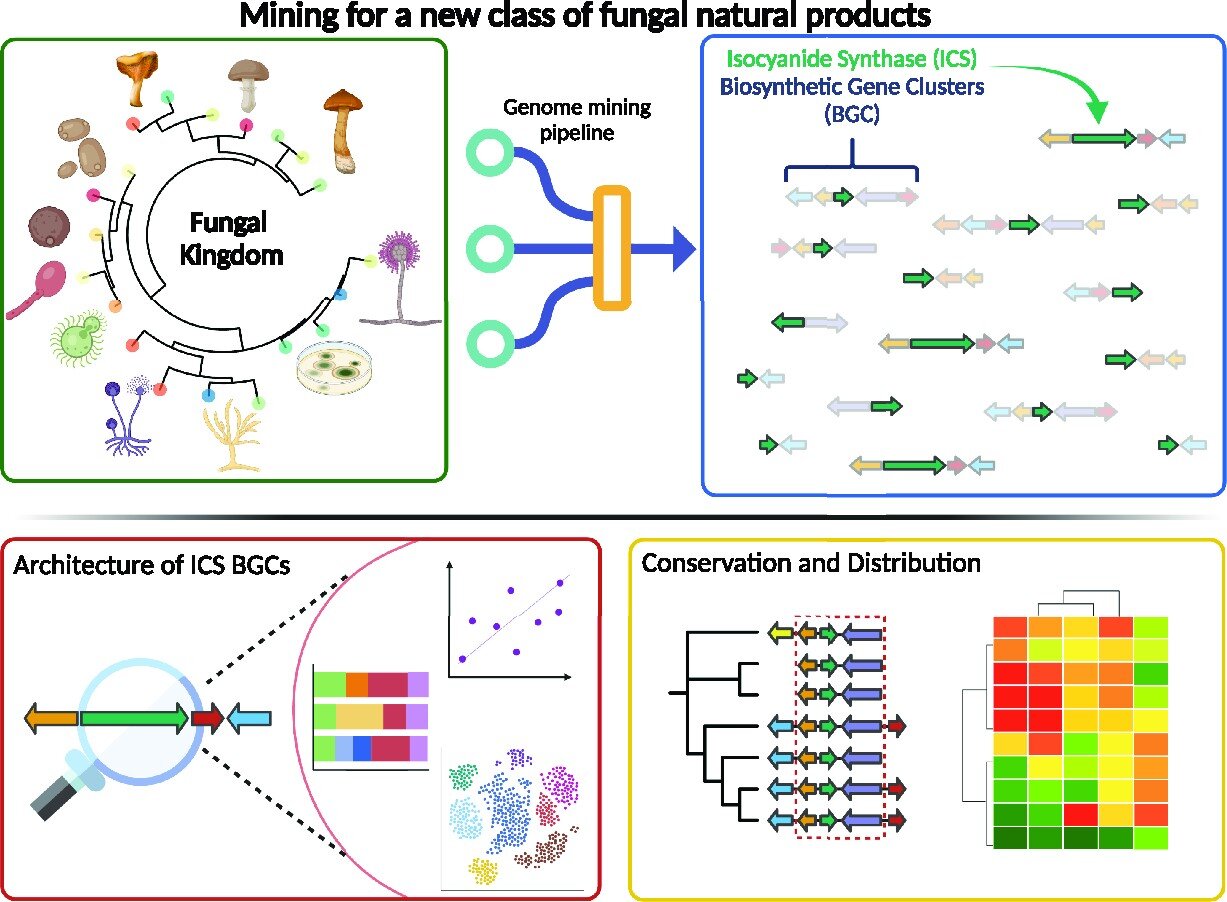A newly described type of chemistry in fungi is both surprisingly common and likely to involve highly reactive enzymes, two traits that make the genes involved useful signposts pointing to a potential treasure trove of biological compounds with medical and chemical applications.
It was also nearly invisible to scientists until now.
In the last 15 years, the hunt for molecules from living organisms—many with promise as drugs, antimicrobial agents, chemical catalysts and even food additives—has relied on computer algorithms trained to search the DNA of bacteria, fungi and plants for genes that produce enzymes known to drive biological processes that result in interesting compounds.
“The field kind of hit a wall in the early 2000s, when the discovery process was to extract things from fungi and see what those extracts did. But we kept rediscovering the same things,” says Grant Nickles, a graduate student in the lab of Nancy Keller, professor of medical Microbiology and immunology. “As we learned more about the genes that make these cool natural products, we designed algorithms that could search for them, find targets and make the process much more efficient.”
That method also hit a wall of sorts because the algorithms only had eyes for certain types of genes.
2023-07-21 04:48:02
Original from phys.org
